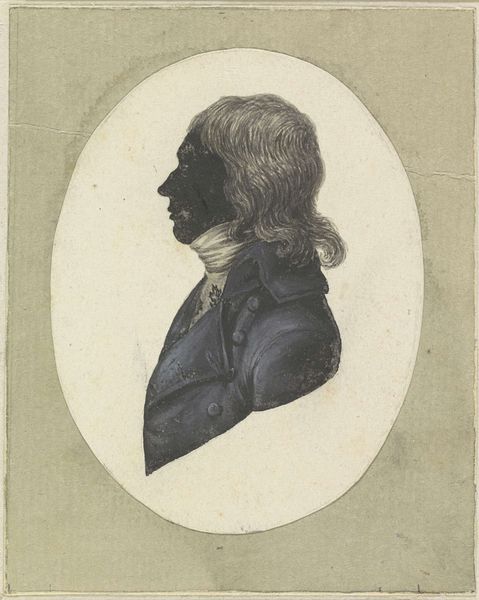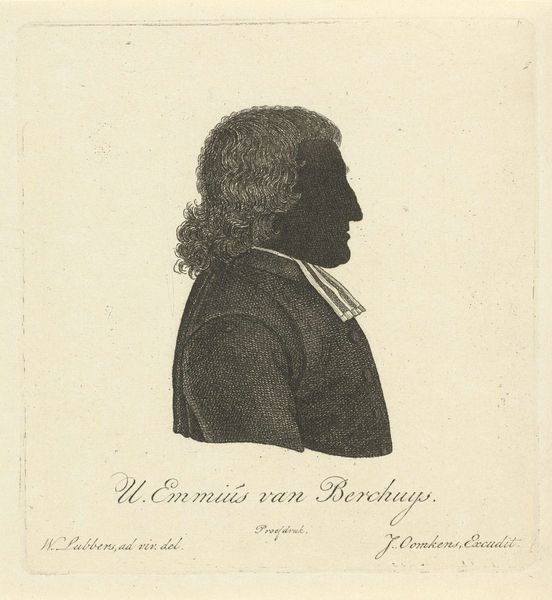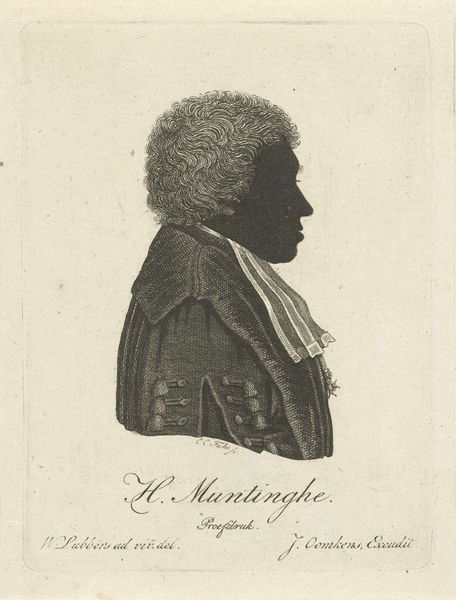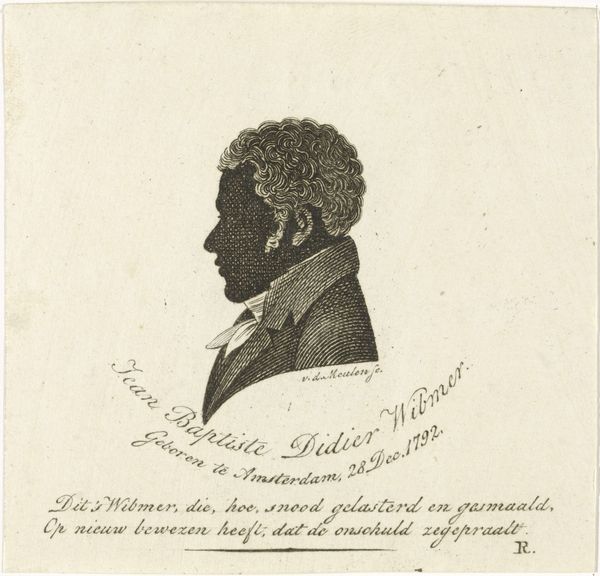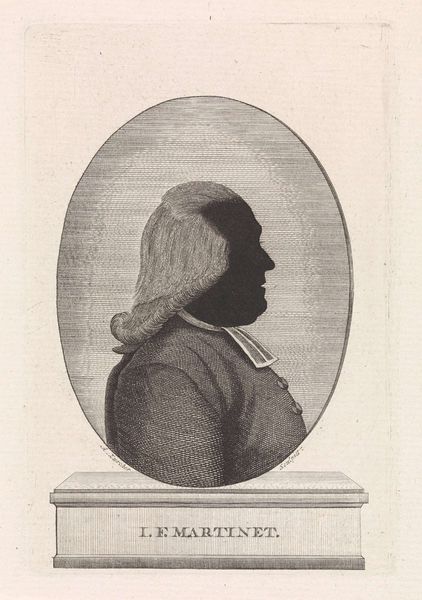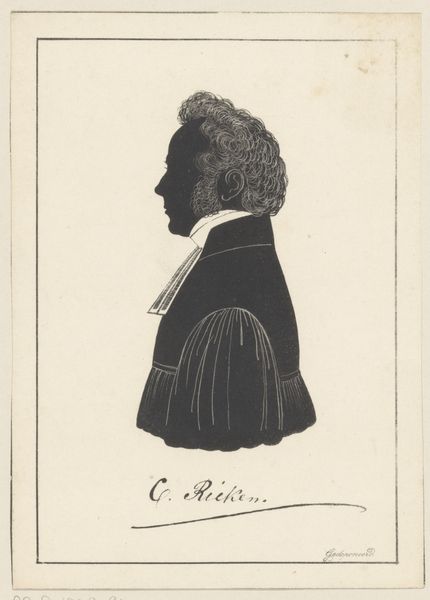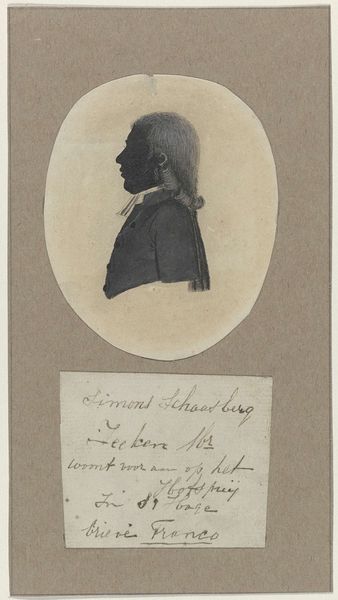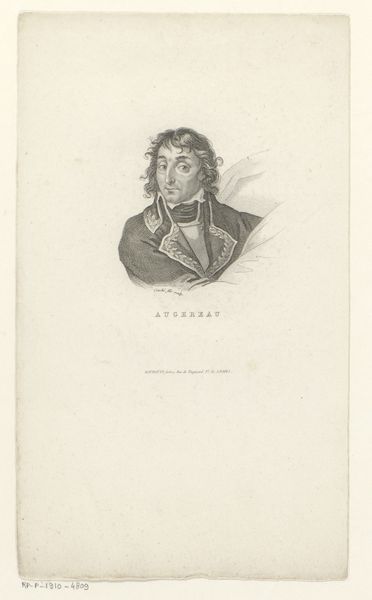
print, engraving
#
portrait
# print
#
romanticism
#
line
#
engraving
Dimensions: height 109 mm, width 82 mm
Copyright: Rijks Museum: Open Domain
Curator: Before us we have "Silhouetportret van Eelco Tinga," an engraving from the early 19th century currently residing here at the Rijksmuseum. Editor: Immediately, I’m drawn to the contrast. The figure is a pure silhouette against a pale background, but then filled with delicate, incredibly fine lines to suggest details of clothing. It's almost photorealistic within that stark contrast. Curator: It does speak to the rise of Romanticism at the time. The silhouette itself holds echoes of Neoclassical portraiture, but the individual, Eelco Tinga, is rendered with a softer, perhaps more human sensibility in the engraved detail. Editor: I’d say the density of the engraving marks out planes of the face and emphasizes fabric folds. See how the details concentrate around his jacket, giving it structure despite being mostly black? That formal tension between simplicity and elaboration is key to reading this work. Curator: Absolutely. And beyond form, consider the cultural meaning embedded here. Silhouette portraits, relatively inexpensive, democratized portraiture during this period. It created a wider audience and shifted its societal function. It hints at a burgeoning middle class hungry to connect to a deeper, wider narrative of belonging. Editor: It makes sense: an outline captures likeness efficiently, and the details infer individuality and social standing. Even the slight curl in his hair, carefully engraved, becomes significant in its suggestion of individuality within a formal constraint. Curator: And the 'line' itself—as the primary visual element—conveys symbolic weight, mapping a man to the society surrounding him. The sharp delineation versus internal flourishes becomes more than mere appearance—it encapsulates larger societal energies and shifting social hierarchies. Editor: A brilliant summary. So, in essence, the artist used formal techniques to reveal more than a simple likeness, it became a social and historical record captured in its basic structural elements. Curator: Indeed. It really helps see beyond just the 'who' to see a window into what he, and his likeness, represented to the culture at that moment.
Comments
No comments
Be the first to comment and join the conversation on the ultimate creative platform.

